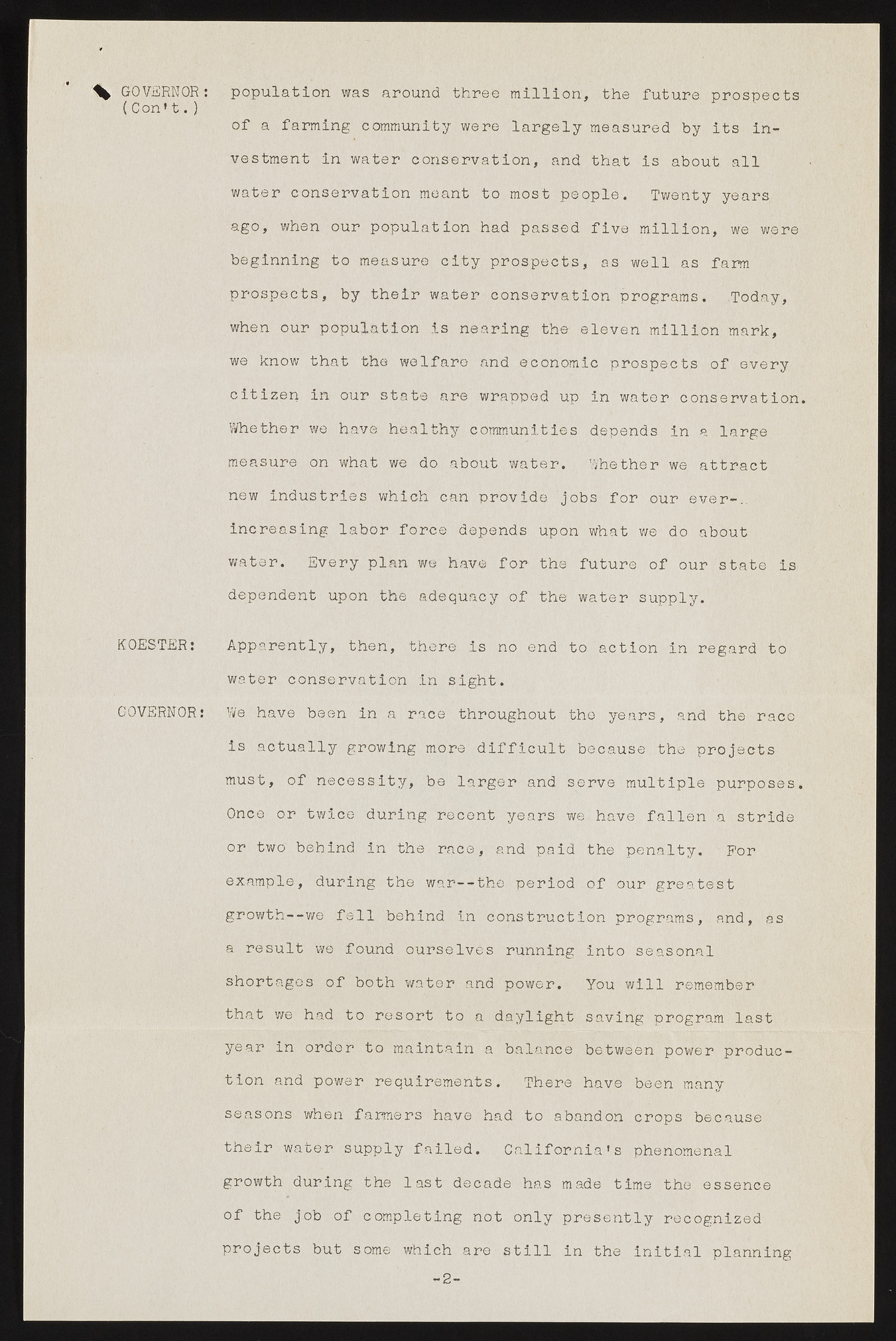Copyright & Fair-use Agreement
UNLV Special Collections provides copies of materials to facilitate private study, scholarship, or research. Material not in the public domain may be used according to fair use of copyrighted materials as defined by copyright law. Please cite us.
Please note that UNLV may not own the copyright to these materials and cannot provide permission to publish or distribute materials when UNLV is not the copyright holder. The user is solely responsible for determining the copyright status of materials and obtaining permission to use material from the copyright holder and for determining whether any permissions relating to any other rights are necessary for the intended use, and for obtaining all required permissions beyond that allowed by fair use.
Read more about our reproduction and use policy.
I agree.Information
Digital ID
Permalink
Details
Member of
More Info
Rights
Digital Provenance
Publisher
Transcription
% GOVERNOR: (Con* t .) KOESTER: GOVERNOR: population was around three million, the future prospects of a farming community were largely measured by its investment in water conservation, and that is about all water conservation meant to most people. Twenty years ago, when our population had passed five million, we were beginning to measure city prospects, as well as farm prospects, by their water conservation programs. .Today, when our population is nearing the eleven million mark, we know that the welfare and economic prospects of every citizen in our state are wrapped up in water conservation. Whether we have healthy communities depends in a large measure on what we do about water. Whether we attract new industries which can provide jobs for our ever-., increasing labor force depends upon what we do about water. Every plan we have for the future of our state is dependent upon the adequacy of the water supply. Apparently, then, there is no end to action in regard to water conservation in sight. We have been in a race throughout the years, and the race is actually growing more difficult because the projects must, of necessity, be larger and serve multiple purposes. Once or twice during recent years we' have fallen 'a stride or two behind in the race, and paid the penalty. For example, during the war--the period of our greatest growth--we fell behind in construction programs, and, as a result we found ourselves running into seasonal shortages of both water and power. You will remember that we had to resort to a daylight saving program last year in order to maintain a balance between power production and power requirements. There have been many seasons when farmers have had to abandon crops because their water supply failed. California's phenomenal growth during the last decade has made time the essence of the job of completing not only presently recognized projects but some which are still in the initial planning

